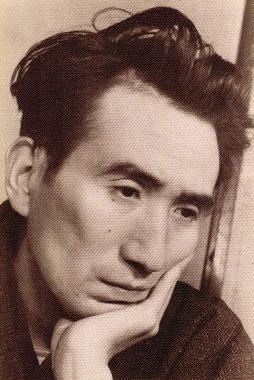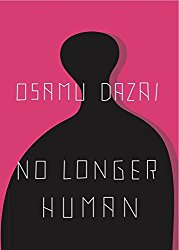Osamu Dazai: The tragic genius of Japanese literature
- Published on : 27/06/2024
- by : Japan Experience
- Youtube
Osamu Dazai, born Shūji Tsushima in 1909, was one of Japan's most influential and controversial writers of the 20th century. His brutally honest, often autobiographical works captured the turmoil of post-war Japan and continue to resonate with readers today. Dazai's life was marked by repeated suicide attempts, struggles with addiction, and a sense of profound alienation that permeated his writing. Despite his troubled existence, or perhaps because of it, Dazai produced some of the most poignant and enduring literature in modern Japanese history. His works like "No Longer Human" and "The Setting Sun" are considered classics that offer deep insights into the human condition.
Early life and literary beginnings
Osamu Dazai was born into a wealthy landowning family in Aomori Prefecture, northern Japan. As the tenth of eleven children, he grew up in a large household staffed with servants. From an early age, Dazai showed a talent for writing, contributing to literary magazines while still in school. His aristocratic upbringing would later become a source of both privilege and discomfort for the young writer.
Dazai's literary career began in earnest while studying French literature at Tokyo University. However, his time at university was marked by rebellion against his family's expectations. He became involved with a geisha, experimented with Marxism, and made his first suicide attempt in 1929. These experiences would shape his early works, which often dealt with themes of alienation, self-destruction, and social critique.
Dazai's first published story, "Ressha" ("Train"), appeared in 1933 under his pen name. This marked the beginning of his experimentation with the "I-novel" style, a confessional form of autobiographical fiction that would become his trademark. His early works like "The Final Years" and "Flowers of Buffoonery" established him as a promising new voice in Japanese literature, even as he struggled with personal demons.

Major works and themes
Dazai's most famous works were written in the years following World War II. "The Setting Sun" (1947) and "No Longer Human" (1948) are considered his masterpieces, capturing the disillusionment and cultural upheaval of post-war Japan. "The Setting Sun" depicts the decline of the aristocratic class, while "No Longer Human" presents a brutally honest portrayal of a man unable to connect with society, widely believed to be a thinly veiled autobiography.
Other notable works include:
- "Villon's Wife" (1947) - A story of resilience in the face of hardship
- "Schoolgirl" (1939) - An early work showcasing Dazai's ability to inhabit different perspectives
- "Run, Melos!" (1940) - A retelling of a Greek myth that explores themes of friendship and betrayal
Dazai's writing often grappled with themes of alienation, self-loathing, and the search for meaning in a rapidly changing world. His characters frequently struggle with feelings of inadequacy and a sense of being outsiders in their own society. The raw honesty and emotional depth of his work struck a chord with readers, particularly young people grappling with similar feelings of displacement in the aftermath of the war.
Struggles with mental health and suicide attempts
Throughout his life, Dazai battled severe depression and made multiple suicide attempts. His first attempt came in 1929, while he was still a university student. Over the next two decades, he would attempt suicide at least three more times before his final, successful attempt in 1948.
Dazai's mental health struggles were compounded by his addictions to alcohol and morphine-based painkillers. These experiences deeply informed his writing, lending his work a raw, confessional quality that resonated with readers. His portrayal of mental illness and addiction was groundbreaking in Japanese literature, offering an unflinching look at topics that were often considered taboo.
Despite periods of productivity and success, Dazai's personal life remained tumultuous. He abandoned his first wife after she had an affair, remarried, and later left his second wife for another woman. His relationships were often volatile, mirroring the chaos of his inner emotional life.

Impact on Japanese literature and culture
Osamu Dazai's influence on Japanese literature and culture cannot be overstated. He is widely regarded as one of the most important Japanese writers of the 20th century, alongside figures like Yukio Mishima and Yasunari Kawabata. His works continue to be widely read and studied in Japan, with "No Longer Human" consistently ranking as one of the best-selling novels in the country.
Dazai's impact extends beyond literature into popular culture. His life and works have inspired numerous adaptations in film, television, and manga. The enduring popularity of his books, especially among young readers, speaks to the timeless nature of his themes and the power of his prose.
In academic circles, Dazai's work has been the subject of extensive study and analysis. Scholars have explored his unique position in Japanese literature, straddling the line between pre-war and post-war writing styles. His contributions to the development of the I-novel form and his unflinching exploration of taboo subjects have secured his place in the canon of modern Japanese literature.
Writing style and literary techniques
Dazai's writing style is characterized by its raw honesty, dark humor, and psychological depth. He was a master of the I-novel form, blending autobiography with fiction to create deeply personal narratives. His prose is often described as deceptively simple, with a conversational tone that belies the complexity of the emotions and ideas he explores.
Key aspects of Dazai's literary technique include:
- First-person narration that blurs the line between author and protagonist
- Use of multiple perspectives and unreliable narrators
- Dark humor and self-deprecation
- Incorporation of Western literary influences alongside Japanese traditions
- Fragmented narratives that mirror the psychological state of his characters
Dazai's ability to capture the nuances of human psychology, particularly the darker aspects of the human experience, set him apart from his contemporaries. His writing often feels startlingly modern, addressing themes and employing techniques that were ahead of their time.
Legacy and influence on modern Japanese literature
Osamu Dazai's legacy continues to loom large over Japanese literature. His unflinching portrayal of human weakness and societal decay has influenced generations of writers who came after him. Many contemporary Japanese authors cite Dazai as a major influence, admiring his honesty and his ability to capture the complexities of the human psyche.
Dazai's work has also gained increasing recognition internationally in recent years. Translations of his major works have introduced him to new audiences around the world, where readers have found his themes of alienation and search for meaning to be universally relevant.
In Japan, Dazai's status as a cultural icon remains secure. His books continue to sell well, and his life story has become the stuff of legend. The image of Dazai as the quintessential tortured artist resonates with each new generation of readers, ensuring his place in the pantheon of great Japanese writers.
For those interested in exploring more of Japan's rich literary tradition, other famous Japanese writers offer a diverse range of styles and perspectives. Additionally, there are many excellent books on Japan that provide deeper insights into the country's culture and history.
The final years and untimely death
The last years of Osamu Dazai's life were marked by intense creativity and personal turmoil. Despite his growing fame and the success of works like "The Setting Sun," Dazai's mental health continued to deteriorate. His alcoholism worsened, and he struggled to maintain stable relationships.
In 1947, Dazai began work on what would become his most famous novel, "No Longer Human." The book, a devastating portrayal of a man's descent into self-destruction, is widely considered to be Dazai's literary testament. It was published in 1948, just months before his death.
On June 13, 1948, Dazai and his lover, Tomie Yamazaki, drowned themselves in the Tamagawa Canal. Their bodies were discovered on June 19, which would have been Dazai's 39th birthday. The circumstances surrounding their deaths have been the subject of much speculation and have contributed to the mythologizing of Dazai's life and work.
Dazai's suicide, while tragic, seemed almost inevitable to many who knew him. It was the culmination of a lifelong struggle with depression, addiction, and a sense of profound alienation from society. In death, as in life, Dazai became a symbol of the tortured artist, his work forever intertwined with his tragic biography.
Today, Osamu Dazai is remembered not just for the circumstances of his death, but for the enduring power of his writing. His unflinching exploration of the human condition continues to speak to readers around the world, cementing his status as one of Japan's greatest literary figures.









